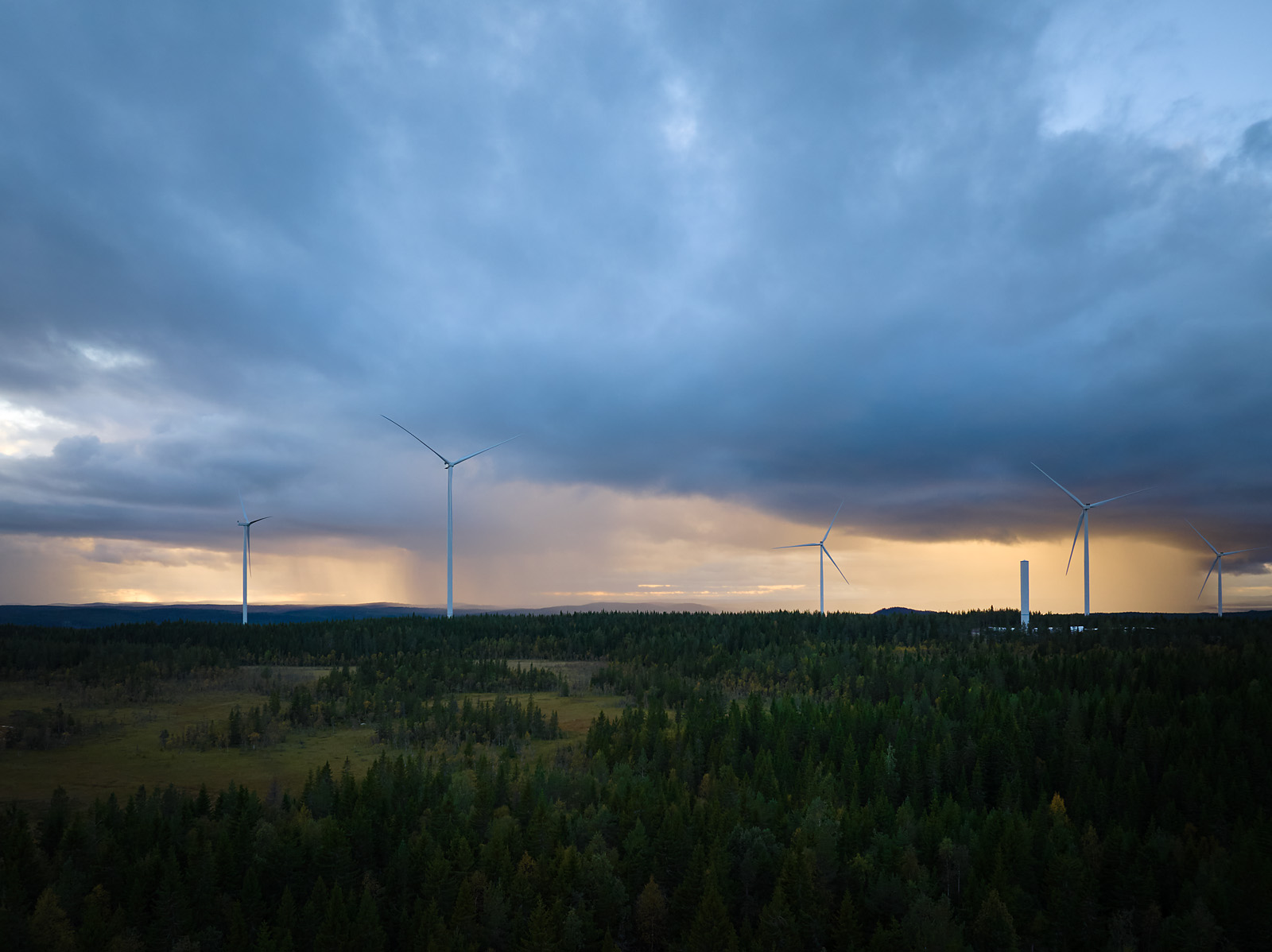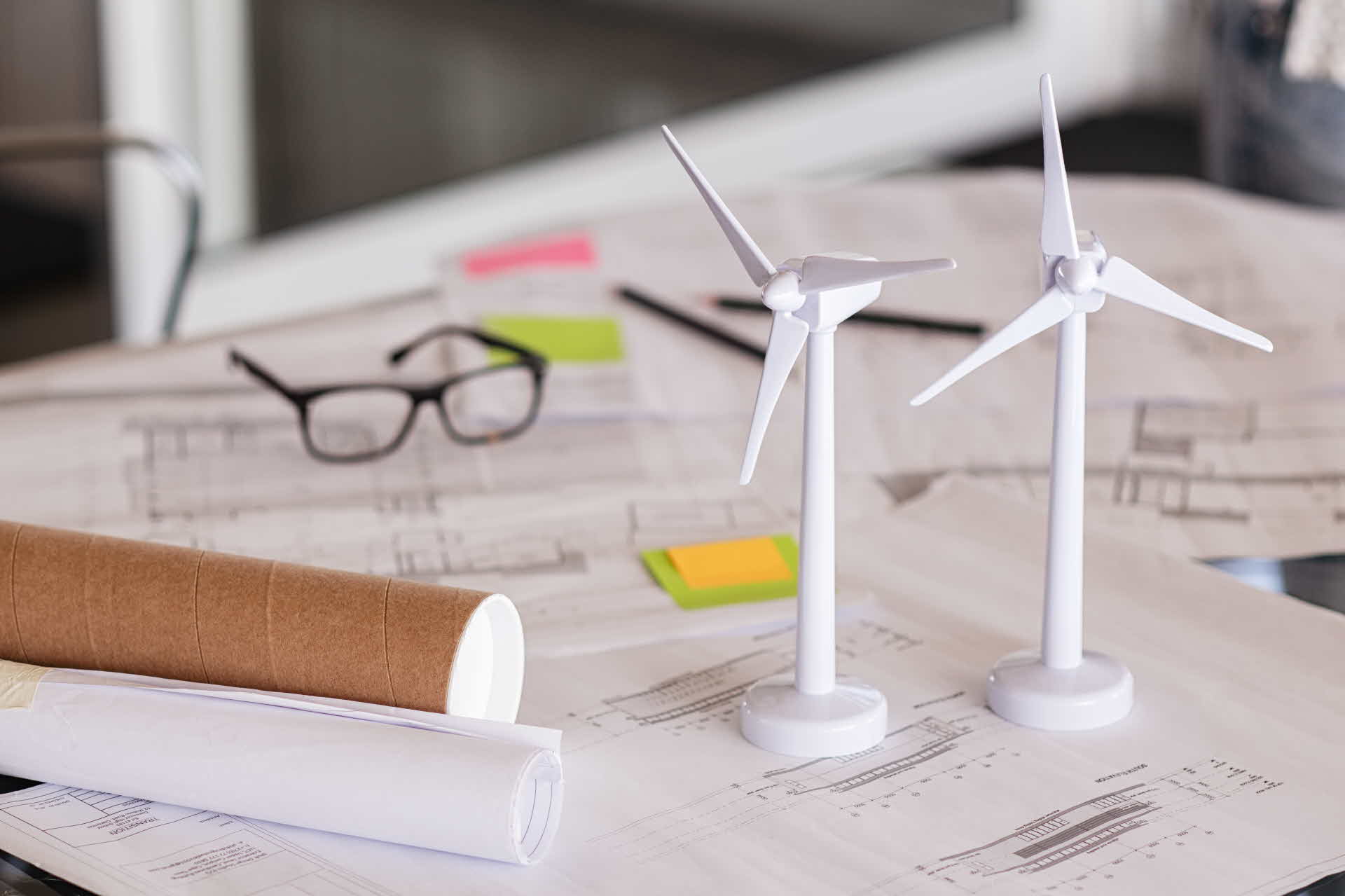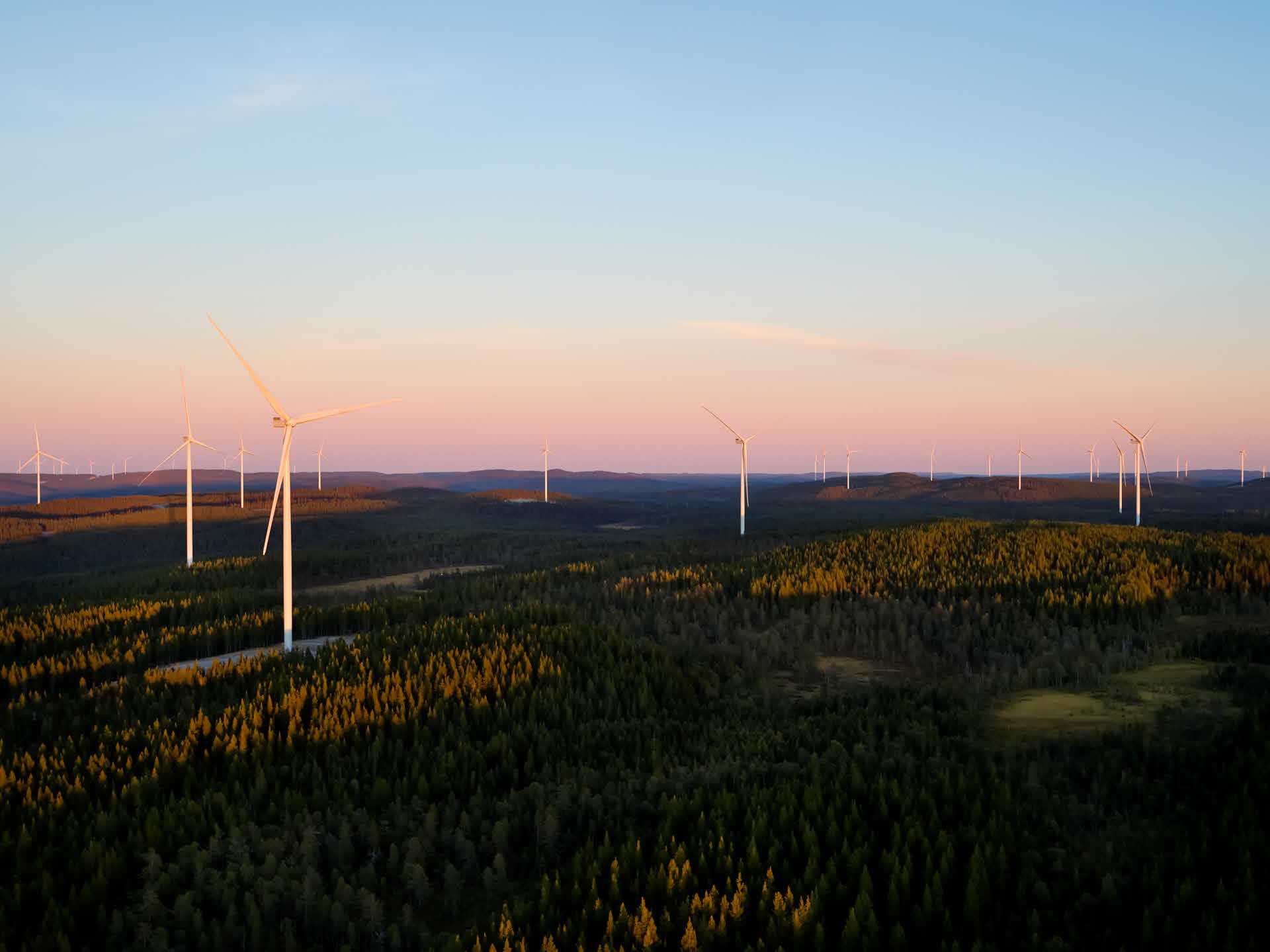
- RENEWABLE ENERGY
- WIND POWER
- FACTS ABOUT WIND POWER
Wind provides a lot of energy
Wind power is a renewable energy source and one of the best environmental choices for electricity production. A 6–7 MW wind turbine in a good wind location can produce approximately 20,000 MWh per year. This corresponds to the electricity needs of about 1,000 electrically heated homes, each consuming 20,000 kWh annually, or around 8,300 electric cars with an annual consumption of 2,400 kWh each.
How wind is converted into electricity
Wind is created when air moves from areas of higher pressure to areas of lower pressure. The greater the differences in air pressure, the stronger the wind.
These pressure differences are mainly caused by the sun heating the Earth’s surface unevenly in different places. When the air is heated, it becomes lighter and rises, and colder air flows in to replace it – this is what we experience as wind.
When the wind passes a wind turbine, it makes the rotor blades spin. The blades are attached to a shaft that drives a generator inside the nacelle at the top of the tower. The generator converts the motion into electricity.
A wind turbine starts producing electricity at around 4 meters per second and shuts down if the wind becomes too strong, around 25 meters per second, to prevent damage.
Modern wind turbines can capture up to approximately 45 percent of the energy carried by the wind. To make better use of the wind, towers are built increasingly taller, where the air is smoother and less turbulent. At the same time, rotor blades have become longer – the largest can be up to 85 meters long.
In Sweden, it is windiest during autumn and winter, which is convenient because that is also when our electricity demand is highest. The least wind usually occurs in May.
FAQ
In 2024, Swedish wind turbines produced 40.8 TWh, corresponding to about 30% of Sweden’s electricity consumption of 129 TWh. At the same time, Sweden exported 33 TWh to neighboring countries.
By 2045, Sweden aims to transition industry, agriculture, and road transport to achieve net-zero greenhouse gas emissions. To accomplish this, electricity production will need to increase to approximately 300 TWh, according to assessments by the Swedish Energy Markets Inspectorate. This will require continued expansion of wind power as well as other fossil-free production.
Wind turbines produce electricity about 80% of the time over the course of a year. The fact that wind power cannot produce all the time is something we always account for in our economic calculations.
Financial security for the restoration of the wind farm after its operational life is one of the requirements imposed by the County Administrative Board and must be approved by the Board before construction begins. The amount to be set aside per turbine is determined by the County Administrative Board. Once the environmental permit is granted, the developer must deposit these funds into a locked, inflation-adjusted account with the County Administrative Board. When the wind farm is decommissioned at the end of its lifespan, the allocated funds are used to finance the dismantling of the turbines and the restoration of the affected areas.
As the technology for wind turbines advances, it also creates opportunities to produce more electricity per turbine at higher altitudes. The increase in turbine height is therefore linked to improved technology that allows more energy to be extracted from the wind at greater heights.
Wind turbines can stand still for various reasons. It may be due to maintenance, too little wind, or too much wind. On average, a wind turbine produces electricity about 80% of the time. This is sufficient for the investment to be worthwhile.

